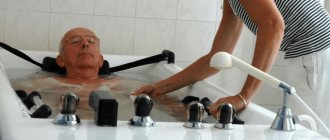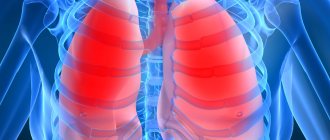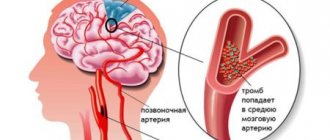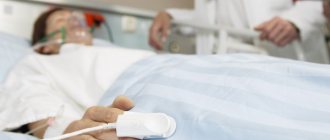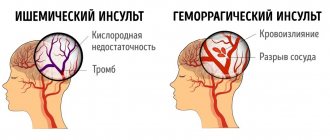Stroke is a common neurological pathology with many manifestations. Some consequences of a stroke can be treated and restored with adequate medical care. These consequences include seizures that occur in women and men after an ischemic or hemorrhagic stroke.
The development of convulsive syndrome is caused by the death of brain neurons and the formation of a focus of necrosis. The body's response to this process is the activation of other neurons to restore blood circulation and stop the pathological process. Necrotic tissue is replaced by a cavity filled with fluid; when a cyst forms, a person does not feel discomfort. However, when neurons are irritated by the cyst, seizures can occur.
Treatment of seizures and other consequences of stroke is carried out by neurologists at the Yusupov Hospital, who offer patients individual therapy programs. Specialists are able to improve the quality of life and restore the functions of even those patients who were abandoned in other medical institutions.
Features of occurrence and symptoms
Cramps are involuntary twitches or contractions of muscles that can last several tens of minutes. Generalized seizures after a stroke are characterized by muscle contractions throughout the body. After such attacks, the patient often falls asleep or loses consciousness, since generalized convulsions are a stressful situation for the body.
After a stroke, seizures can manifest in patients in the form of:
- numbness of one or both limbs at the same time, feeling of a wooden leg or arm;
- contractions of the muscles of the face and neck, resulting in a “mask-like face”, tilting of the head to one side or asymmetry of the face on one side;
- contractions of the facial muscles against the background of numbness of the limbs.
Some patients experience mild tremors after a stroke, while other patients experience short-term cramps throughout the body. This circumstance is taken into account by neurologists at the Yusupov Hospital; additional therapeutic measures are prescribed to patients to treat seizures.
Convulsive syndrome appears not only in acute circulatory disorders; its signs are noted by some patients during the first months of rehabilitation, when exacerbations occur. If seizures occur, a patient who has suffered a stroke requires medical care in a hospital setting.
Make an appointment
Seizures after a stroke: what to do, what danger they pose
In older people, about 30% of cases of epileptic seizures are diagnosed after suffering a brain stroke. A convulsive state may develop in the first days, weeks, or appear unexpectedly several months or years after the stroke. Attacks can affect a specific area (for example, a leg) or the entire body, occur one-time or regularly (2-8% of patients).
Features of treatment
The therapeutic approach depends on the type of seizure. If these are warning signs, specific anticonvulsants are not prescribed. The main goal of treatment is to eliminate the narrowing of the artery. Depending on the cause of the pathology, the patient is prescribed anticoagulant medications (aspirin), blood pressure pills, and neuroprotectors.
Early seizures do not require immediate specific treatment. They usually disappear on their own once the metabolism in the brain has stabilized. Antiepileptic drugs are prescribed exclusively to patients with repeated unprovoked seizures.
Isolated late attacks also require observation. If episodes of seizures are repeated, there is a possibility of developing post-stroke epilepsy, a chronic disease manifested by periodic convulsive conditions. If the diagnosis is confirmed, patients are prescribed anticonvulsants:
- carbamazepine (tegretol, finlepsin);
- valproates (convulex, convulsofin, depakine, valparin);
- topiramate (maxitopyr, topsaver, topamax);
- lamotrigine (convulsan, lamitor, lamictal);
- Levetiracetam (Keppra).
An alternative to drug treatment for seizures is the installation of a miniature vagus nerve stimulator. It helps dampen abnormal nerve impulses that cause epilepsy.
Preventing seizures
The American Stroke Association recommends prophylactic antiepileptic drugs for people with subarachnoid hemorrhage or lobar hemorrhagic stroke in the first weeks after a stroke. Specific methods for preventing seizures in patients with ischemic form have not been developed. Thrombolytic therapy is thought to reduce the likelihood of their occurrence (2).
Causes
The occurrence of seizures after a stroke is associated with the death of neurons. The body, in order to limit the necrotic lesion and preserve the connection between nerve cells, redistributes the functions of the affected cells between healthy neurons.
The protection mechanism is implemented through the formation of a cavity that is filled with liquid. This neoplasm does not have a significant impact on the patient’s well-being and quality of life. However, in some cases it can irritate neurons, resulting in seizures.
Neurologists call the main causes of seizures that develop after a stroke, adhesions, cysts and various neoplasms. However, experts also identify factors that can provoke and aggravate convulsive syndrome:
- side effects that occur when taking certain medications;
- suffered stress or a state of emotional distress;
- psychological and physical fatigue.
Convulsive syndrome is a dangerous consequence of a stroke, in which a shock reaction occurs in the body. Neurologists at the Yusupov Hospital use effective developments in modern medicine to eliminate the causes of seizures after a stroke.
Precipitating factors for seizures
During a stroke, many nerve cells die, and necrotic manifestations form cystic cavities filled with fluid. The resulting neoplasm, other than a convulsive syndrome, no longer reveals itself. Seizures after a stroke occur as a result of stimulation of nearby tissues.
On this topic
- Stroke
10 reasons for the development of ischemic attack
- Natalia Sergeevna Pershina
- June 5, 2020
In addition to this factor, there are other reasons for the development of such seizures:
- The cyst is located in the part of the brain responsible for activity in the area of seizures. Repeated seizures may indicate another hemorrhage.
- The presence of an infectious infection that occurred during surgery or during recovery after surgery.
- Experiencing constant stressful situations, nervous exhaustion.
- Fatigue after physical activity.
- Side effects due to long-term use of various medications.
- Psycho-emotional instability.
Seizures are dangerous because they indicate the progression of a pathological process, ending in a recurrent stroke or infarction of the gray matter, so you cannot delay a visit to a specialist and a brain examination.
Consequences
Seizures after a stroke require immediate treatment, as they can cause the development of certain pathologies. The greatest danger for the patient is convulsions accompanied by loss of consciousness during the period of exacerbation of the disorder. The main consequences of convulsive syndrome are:
- repeated cerebrovascular accidents;
- short-term or long-term loss of consciousness. Some patients fall into a coma after seizures, since seizures are a serious stress for their body;
- disability as a consequence of seizures occurs with constant seizures, which, due to the severity of brain damage, are difficult to treat. In this condition, restoration of functions is also difficult;
- death is possible in the absence of treatment for seizures, frequent and intense seizures. Most often, seizures are of this nature when the brain stem is damaged, damage to which can cause the activity of the respiratory and cardiac systems to stop.
Neurologists at the Yusupov Hospital note psychosomatic problems in patients with this disorder, so professional psychologists, neurodefectologists and psychotherapists are involved in the process of their treatment and rehabilitation. People who have suffered a stroke are often unable to care for themselves and lose the ability to move and perform everyday tasks. Convulsive syndrome aggravates their condition, as a result of which people experience a feeling of inferiority.
Dangerous complications
Lack of adequate treatment for seizures after stroke can cause complications. Such patients are at risk:
- Repeated stroke, which not everyone manages to survive;
- Comatose state - attacks of muscle spasms lead first to a short-term and then to a longer loss of consciousness. With frequently recurring seizures, the patient falls into a coma;
- Loss of ability to work - the regular occurrence of seizures that do not disappear when taking standard medications indicates necrotization of large areas of the brain. Rehabilitation of such a patient is not effective, the person becomes disabled;
- Fatal outcome - constant relapses of convulsive attacks, the lack of positive dynamics during treatment indicates the likelihood of internal bleeding. It is practically impossible to eliminate this condition. Therefore the patient dies.
To prevent the development of dangerous consequences of seizures during a stroke, you should immediately seek medical help, undergo a comprehensive examination and begin treatment.
Treatment
If seizures occur, it is important to consult a neurologist and not self-medicate. In some cases, it is advisable to call an ambulance and provide first aid to the person before it arrives. At the time of an attack, the person should be freed from tight clothing and accessories to ensure access to oxygen. If the attack occurred indoors, it is important to provide fresh air by opening the windows. After this, the patient should be placed comfortably and a pillow or bolster should be placed under the head.
Dentures pose a danger during an attack of convulsions - they should be removed, and if there are food residues in the mouth, they should be removed. The patient's hoarse breathing may indicate the presence of factors making breathing difficult; it is important to exclude their effect. A massage during an attack will help get rid of muscle pain; when performing it, you should lubricate the skin with olive oil.
At the Yusupov Hospital, treatment of seizures is carried out in the intensive care or intensive care unit. Intravenous administration of anticonvulsants can stop seizures. If this remedy turns out to be ineffective, then specialists use anticonvulsants administered through a tube or parenterally.
Carbamazepine and Finlepsin also help alleviate the patient's condition. However, when using Finlepsin, neurologists take into account possible side effects:
- apathy and loss of strength;
- decreased cognitive activity with long-term use of the drug;
- increased bone fragility or the development of osteoporosis (calcium supplements are prescribed to prevent these consequences);
- when combined with anticoagulants, the likelihood of bleeding increases.
Treatment of seizures after a stroke is aimed at relieving symptoms. Neurologists at our clinic include measures to eliminate seizures in the treatment program. If signs of convulsive syndrome appear, you should contact the Yusupov Hospital, whose specialists carry out emergency hospitalization of patients around the clock.
Make an appointment
Author
Polina Yurievna Vakhromeeva
Neurologist
Pathology therapy
When seizures occur, treatment is aimed at reducing their intensity and eliminating the causes of their occurrence. In order to develop an effective treatment regimen, the patient is recommended to undergo a comprehensive examination. After examining the doctor and collecting anamnesis, he can make a preliminary diagnosis.
To confirm it, angiography, computed tomography and magnetic resonance imaging, clinical blood and urine tests are recommended. Based on the diagnostic results obtained, the doctor prescribes medication.
Most often after a stroke, cramps occur in the legs, as hemorrhage is observed in the frontal lobe of the brain. To eliminate the pathological process, restorative therapy is recommended. Patients are prescribed:
- Antithrombosis drugs . With the help of medications, blood clotting is reduced and excess cholesterol is removed from the body. After the patient is discharged from the hospital, he is prescribed anticoagulants.
- Drugs that restore blood supply . During the period of their use, necrotic phenomena cease. Patients are prescribed medications whose action is aimed at improving brain activity. They also enrich the affected part of the brain with oxygen.
- Nootropics . The action of the drugs is aimed at improving brain activity.
- Anticonvulsant medications . Patients are prescribed Carbamazepine and its analogues, with the help of which a complete fight against seizures is ensured.
To increase the effectiveness of medications, the patient is recommended to use physiotherapy and exercise therapy in parallel.
If a patient experiences convulsions after a stroke, it is recommended that he be prescribed complex treatment, which will eliminate the possibility of developing undesirable effects.





